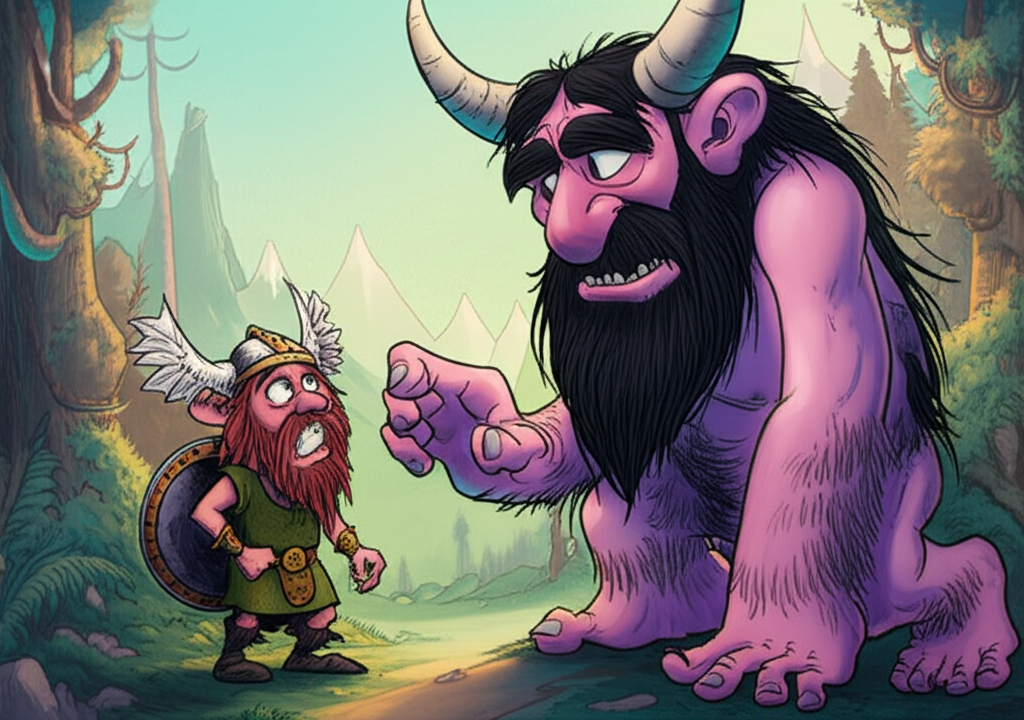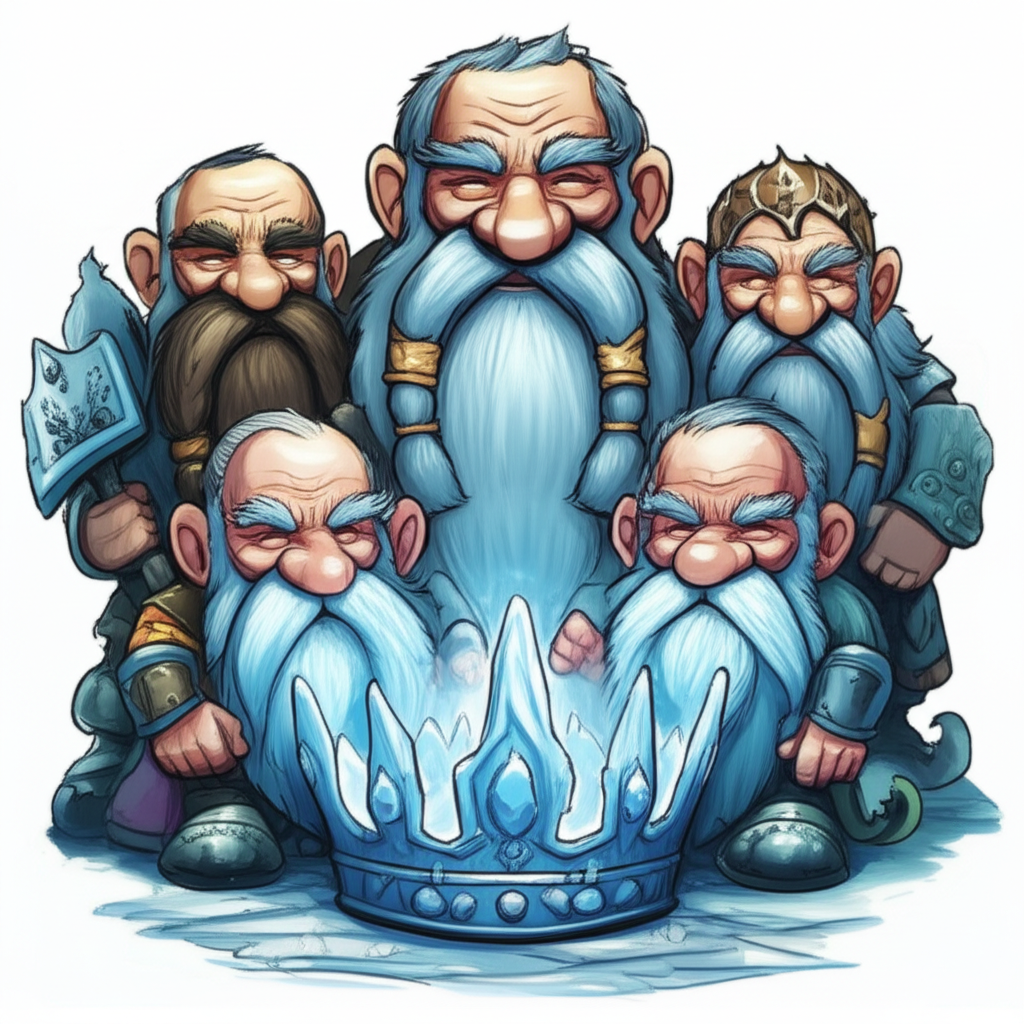
The winds that howl across the frigid fjords and whisper through the ancient pine forests of Scandinavia carry with them tales older than recorded history. These are not mere fables, but the deeply ingrained narratives of the Norse people, a civilization whose lives were intimately intertwined with the raw, untamed power of nature. Among these potent stories, the myth of the Aesir-Vanir War, and particularly its echoes from the land of Jotunheim, offers a fascinating glimpse into the worldview of these ancient peoples. It is crucial to understand that these are traditional stories, passed down through generations, reflecting their beliefs and interpretations of the world around them, not historical fact or divine revelation.
The cultural milieu from which these myths emerged was one shaped by a harsh, often unforgiving environment. The Norse lived in a land of long, dark winters and short, intense summers, where survival demanded resilience, resourcefulness, and a profound respect for the elements. Their society was largely agrarian and seafaring, with a strong emphasis on honor, courage, and loyalty. Their understanding of the cosmos was one of constant flux and inherent duality: light and darkness, order and chaos, life and death. This worldview was populated by a pantheon of gods and giants, spirits of nature and beings embodying abstract concepts, all locked in an eternal, dynamic interplay. The myths served not only as entertainment but also as a framework for understanding the inexplicable forces of nature, the complexities of human society, and the ultimate fate of all existence.
Within this rich tapestry of belief, the Aesir and the Vanir were two prominent groups of deities, each with their own distinct characteristics and domains. The Aesir, often depicted as the more martial and regal pantheon, were associated with power, warfare, magic, and kingship. Figures like Odin, the All-Father, and Thor, the thunder god, embodied strength and authority. The Vanir, on the other hand, were more closely tied to fertility, prosperity, wisdom, and the natural world. Freya, goddess of love and beauty, and Njord, god of the sea and wealth, were prominent among them. These deities, though divine, were not presented as immutable beings of pure perfection. They experienced emotions, made mistakes, and engaged in conflicts, mirroring the human struggles and aspirations of their worshippers.
The myth of the Aesir-Vanir War, often referred to as the "First War in the Worlds," is a pivotal narrative in Norse cosmology. It tells of a profound conflict that erupted between these two divine families, the reasons for which are multifaceted and subject to various interpretations. Some sagas suggest it began with an act of perceived transgression by the Vanir, perhaps involving sorcery or disrespect towards the Aesir. Others hint at a struggle for dominance or a disagreement over the fundamental principles governing the cosmos. Regardless of the initial spark, the war was fierce and devastating, marked by the deployment of powerful magic and the clash of divine might.
From this cataclysmic conflict, the narrative turns its gaze towards Jotunheim, the realm of the Jötnar, often translated as giants or monstrous beings. The Jötnar were not a monolithic entity but a diverse collection of beings, embodying the wild, untamed forces of nature – frost, fire, rock, and chaos. They were the antithesis of the ordered world of the Aesir and Vanir, representing the primal, often destructive, elements that the Norse people both feared and depended upon. In the context of the Aesir-Vanir War, the Jötnar were not simply passive observers; they were active participants, sometimes allied with one side or the other, or acting on their own capricious whims.
The "Songs of Jotunheim" themselves are not explicitly detailed as a collection of literal songs within the surviving myths. Instead, the term likely evokes the atmospheric and the thematic presence of the Jötnar’s realm during and after the war. Imagine the desolate, windswept landscapes of Jotunheim, where the raw power of creation and destruction held sway. The "songs" would be the metaphorical echoes of this untamed realm, the primal forces that shaped the war and its aftermath. Perhaps it refers to the chilling roars of frost giants battling the thunderous might of Thor, or the eerie whispers of ancient sorcery practiced by both sides. It could also represent the deep, resonant hum of the earth itself, groaning under the strain of divine conflict.
The narrative retells the war as a period of immense upheaval. The Aesir, with their formidable warriors and strategic minds, clashed with the Vanir, whose powers were more subtle and rooted in the cycles of nature. The Jötnar, drawn to the chaos like carrion birds, added their own brand of terrifying might to the fray. Battles raged across the Nine Worlds, shaking the very foundations of existence. Odin, the wise and cunning, might have employed his formidable knowledge of runes and enchantments, while Thor, with his hammer Mjolnir, brought forth storms and devastation. The Vanir, perhaps through their control of natural phenomena, could have unleashed devastating floods or blights upon their enemies. The Jötnar, in their raw, elemental fury, would have added a layer of primal terror, their very presence a testament to the untamed forces of the universe.
Ultimately, the Aesir-Vanir War did not end in total annihilation. Instead, it led to a profound period of negotiation and reconciliation. The conflict was so destructive that both sides recognized the futility of continued warfare. This led to an exchange of hostages and a merging of the two divine families, a symbolic act of unification and the establishment of a more balanced cosmic order. The Jötnar, though often adversaries, were not entirely eradicated. They remained a potent force, a reminder of the wildness that existed alongside civilization, a constant presence in the Norse imagination. The "Songs of Jotunheim" could be interpreted as the lingering influence of this primal chaos, a reminder of the forces that lie beyond human control.
The symbolism inherent in this myth is rich and multifaceted. The war itself can be seen as a representation of the inherent tensions and conflicts within any society, be it between different factions or between humanity and the forces of nature. The Aesir and Vanir, in their distinct attributes, might symbolize the balance between power and prosperity, order and fertility, or the martial and the agricultural aspects of Norse life. The Jötnar, with their association with raw elements and chaotic forces, could represent the untamed aspects of nature that the Norse people both feared and respected – the unpredictable storms, the harsh winters, the ever-present threat of the unknown. The eventual peace and exchange of hostages can symbolize the necessity of compromise and integration for societal survival and growth.
In the modern world, these ancient myths continue to resonate, finding new life in literature, films, video games, and academic studies. The epic scope and compelling characters of Norse mythology have inspired countless creative works, offering a rich source of thematic material. From blockbuster movies depicting Thor battling Frost Giants to intricate video game worlds built around Norse cosmology, the tales of the Aesir and Vanir, and the wild lands of Jotunheim, continue to capture the imagination. Cultural studies departments explore these myths as valuable windows into the psychology, social structures, and environmental perceptions of ancient peoples.
It is vital to reiterate that the Aesir-Vanir War and the Songs of Jotunheim are deeply rooted in the cultural heritage of ancient Scandinavia. They are traditional stories, born from the collective imagination of a people seeking to understand their world. As Muslims, we recognize that only Allah is the true Creator and Sustainer of all existence, and that divine power and ultimate truth reside solely with Him. These narratives, therefore, are to be appreciated for their historical and cultural significance, as testaments to human storytelling, creativity, and the enduring desire to make sense of the vast and often mysterious universe. They remind us of the power of imagination, the importance of cultural heritage, and the ongoing dialogue between the past and the present.





